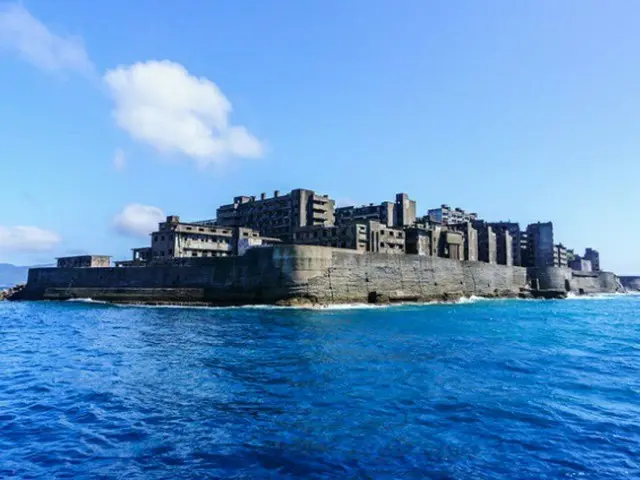A resolution was adopted to evaluate the book's efforts. The 2021 committee resolution called Japan's response "insufficient." The resolution also urges continued dialogue with relevant countries such as South Korea.
. The ``Sites of Japan's Meiji Industrial Revolution'' consists of 23 constituent heritage sites spanning eight prefectures and 11 cities, including Nagasaki. From the 1850s onwards, the technology transfer from the West to the non-Western world combined with traditional Japanese culture.
It is a cultural heritage related to the rapid development of coal mines, iron and steel, and shipbuilding industries up to 910 AD, and was registered as a World Cultural Heritage Site in 2015.
However, when South Korea registered, many Koreans were forced to go to Gunkanjima, which is included in the 23 facilities.
They objected to the registration, claiming that they were forced to work and were sacrificed. In response, Japan announced that it would ``take measures to remember the victims,'' and in June 2020, it sent a message to Tokyo ``Meiji Japan's Industrial Revolution''.
The Industrial Heritage Information Center has been established to introduce the overall picture of "heritage". However, while the center clearly states that people from the Korean peninsula were working there, it also introduces testimonies from former islanders who say there was no discriminatory treatment.
However, the South Korean side criticized the exhibit, saying, ``The exhibit does not clearly explain the damage suffered by people from the Korean peninsula who were forced to work, and the promise made when the site was registered as a heritage site has not been kept.''
In July 2021, UNESCO adopted a resolution stating that the Japanese government's explanation regarding wartime conscripts from the Korean Peninsula was insufficient. The World Heritage Committee states that “strong
They expressed their regret and called for improvements to be made with the Industrial Heritage Information Center's display in mind. The resolution provides an understanding of the many Koreans who were taken against their will and forced to work in harsh conditions.
He called on the government to take such measures. In response, the Japanese government stated, ``Japan has sincerely implemented measures that the government has promised.Based on this position, we would like to respond appropriately.'' World Heritage Committee
The resolution of the meeting was met with opposition from former islanders who lived on Gunkanjima during the war, and at the time the resolution was issued, the Sankei Shimbun reported, ``The South Korean side is accusing the Koreans of forcing them to do harsh labor.'' Materials are Maya
It conveys the voices of former Islanders who are angry, saying things like, ``It's all fake information,'' and ``It's completely unacceptable. Why is UNESCO only condescending to South Korea's position?''
In response to the resolution, the Japanese government was requested by the World Heritage Committee to report on the progress of improvements, and submitted a report in December of last year. Information
The report states that it "takes seriously" the World Heritage Committee's expression of "strong regret" in its draft resolution, and that it will continue to explore the history of Gunkanjima based on documents and testimonies whose sources have been clarified.
He expressed the idea of passing it on to the next generation. After that, the center expanded its exhibits on wartime conscription. According to the Sankei Shimbun, the center collapsed at the Hashima Coal Mine between September 1941 and August 1945.
An exhibit was added to show that 44 people died due to accidents. Of these, 15 are believed to have come from the Korean peninsula. Also, the details of the daily work at the coal mine during the war, the number of people involved, sanitary conditions, and the presence or absence of rockfalls.
The video introduces the ``Safety Monthly Report'' and ``Safety Diary,'' which record such matters. In addition, the World Heritage Committee requested information regarding the treatment of conscripted laborers, so they received information on
A replica of the salary bag of a Korean Peninsular is also on display. Based on these additional exhibitions, the World Heritage Committee on the 14th of this month made a complete change from the 2021 committee resolution and evaluated Japan's efforts.
adopted a resolution to He also urged Japan to continue dialogue with relevant countries such as South Korea. We also request that you conduct further research and verification and report on your future efforts by December 1, 2024.
I met. In response to the resolution, South Korea's Ministry of Foreign Affairs (equivalent to the Ministry of Foreign Affairs) said, ``Based on this resolution, Japan has fulfilled its own commitment to strengthen its explanation strategy to help understand the entire history of the site, and will monitor its progress on a 24-day basis.''
We hope that it will be submitted by December 1, 2020." ``Our government also plans to continue dialogue with Japan and the UNESCO Secretariat in accordance with the resolution.''
2023/09/22 10:03 KST
Copyrights(C)wowkorea.jp 5

